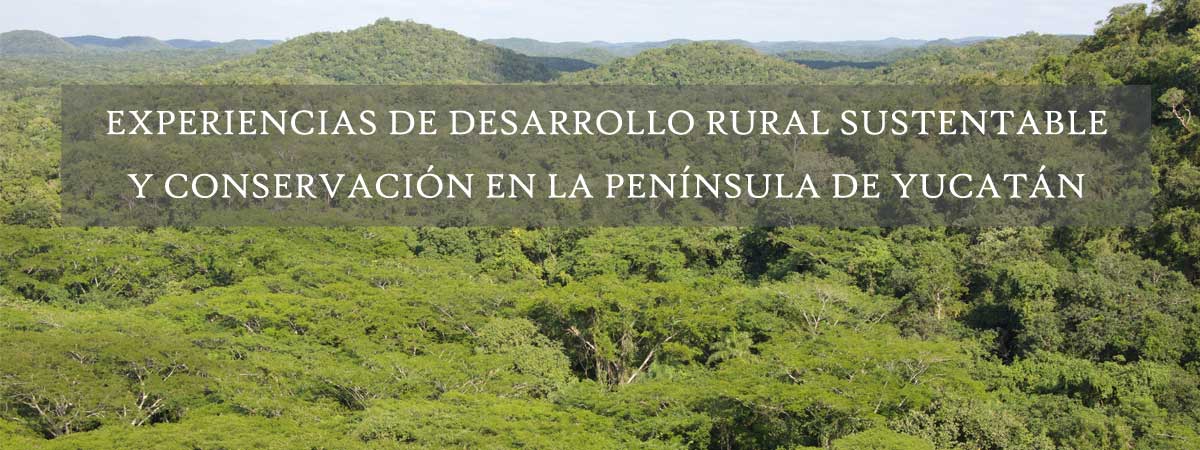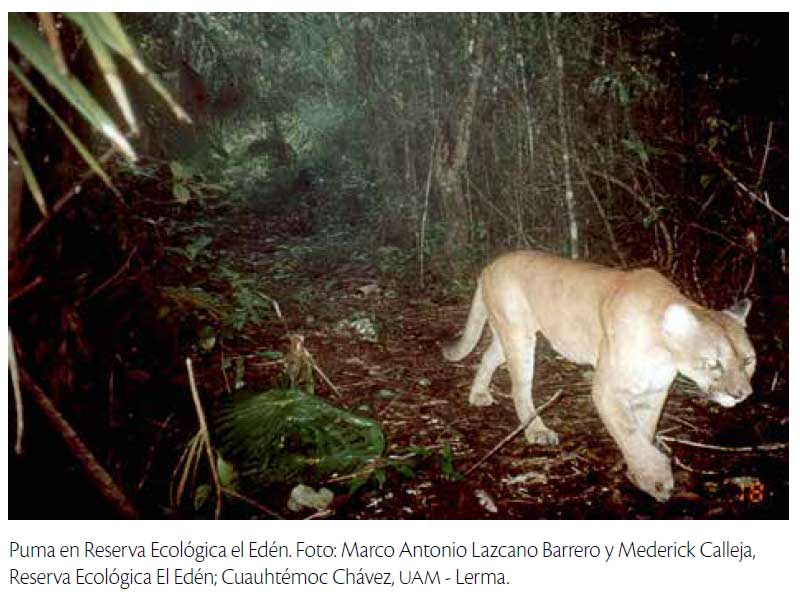El Eden Ecological Reserve and a vision of ecosystems connectivity
 Introduction El Eden Ecological Reserve was created in 1993, thus becoming the first private reserve dedicated to research and conservation of biodiversity in Mexico. That was the beginning of a journey full of unexpected challenges, but also of achievements that kept motivation going on what once was the dream of a group of researchers and conservationists, with the renowned ethnobotany specialist Dr. Arturo Gómez Pompa amongst them. Initially, the main purpose of the reserve was to demonstrate that civil society can make conservation and allocate spaces to use for research and education, which over time was consolidated into a critical mass of researchers and technical information useful for conservation and natural resources management at a regional level. El Eden began with an area of 900 hectares which grew at different stages. Today the reserve has 3,000 hectares, and hopes to reach 4,500 in the short term. But the biggest challenge is to maintain the ecosystem connectivity of the region by making the jaguar a primary conservation objective, and for this it is necessary to expand the vision beyond the reserve’s borders, and generate partnerships with landowners and other public or private nature reserves. In the late 1980s, Dr. Arturo Gómez Pompa and biologist Marco Lazcano first flew over northern Quintana Roo. The purpose was to identify priority sites for wetlands conservation, and Marco was particularly interested in crocodile's conservation. After this first flyover there was a major fire in northern Quintana Roo, so Gómez Pompa was invited to fly again over the area to assess the status in which ecosystems were left, and on that flight Marco participated as well. After those two flyovers, researchers noticed that the area was immense, very well preserved and with ecosystems different to what was known in the rest of the country. They could see from the air linearly wetlands from north to south, following the Holbox fault, intertwined with forests, cenotes and caves that were not common even in the peninsula. Arturo and Marco knew of the ecosystems fragility, that the agricultural frontier was beginning to accelerate and that very close one of the biggest tourist destinations in the world was also growing. Time began to run in those years, the challenge was huge but so was the dream to preserve this biodiversity treasure, a true paradise. To start studying jaguars also marked a milestone for the reserve, but it was more an overtime process than a moment in the history of El Eden. From the beginning, Marco was focused on the study of crocodiles in a different way than conventionally, as he began to identify individuals and nests that could be tracked over time. The advantage the reserve offered by having an ecosystem of stable wildlife populations encouraged researchers to begin studying other animal groups. They began by placing video cameras filming for hours and then checking if any mammal passed through the area. In 2005, with the incorporation of the trap cameras technology, it was possible to photograph the first jaguar, and three days later a cougar that went through the same place. "This encouraged us, Marco says, because it was the evidence that cougars and jaguars shared territory". The year 2005 was key, on one hand the reserve received national conservation recognition for its history, and on the other hand with the addition of trap cameras they moved from documenting traces and footprints to identifying individuals by their spots pattern. This allowed them to record four different jaguars in a three month period, in the same place and with a single camera. That set the tone for them to think that the jaguar population may be large, leading to establish links with other researchers in order to achieve a closer approach at a regional level. The exchange of information with other reserves allowed to recognize that an individual photographed in El Eden in 2006 was the same one that had been photographed by Pronatura in El Zapotal in 2004, 50 km away and across a road.
The conservation strategy of El Eden focuses on a regional level in central North Quintana Roo, and that means clearly identifying conservation units that still preserve enough vegetation to sustain a population of at least 250 or 300 jaguars, which is what is estimated for that area. It is very important to work on the connectivity of this region, Marco mentions, because today we know that in the Yucatan Peninsula there are about 2,000 jaguars, nearly 50% of the country’s population, and it is essential to maintain genetic viability over time. In 2009, the Yum Balam Flora and Fauna Protection Area obtained a photo of the same jaguar that had been documented at El Zapotal in 2004 and at El Eden in 2006. In the years 2010 and 2011, El Eden documents again the same jaguar, and with this sufficient evidence was gathered to prove that the individual has a residence in the area of at least seven years, and the area of occupation coincides with those identified as priority in the maps that were generated in 2007. Following this, El Eden together with UNAM researchers Cuauhtémoc Chávez and Sandra Ortiz, placed a satellite collar on a jaguar from which information was obtained for 16 months, being able to prove that this individual moved 60 km from east to west and 25 km from north to south. With all the information gathered so far, Marco indicates, what we know is that we have a functional unit of continuous ecosystems for jaguar conservation; we know that individuals are there and are using it. In the view of Marco, there are now mechanisms that allow, in financial terms, to devote land to conservation, such as the PES. The big challenge is to maintain these PES in the long term, and that other incentives exist for owners and possessors of land to voluntarily allocate land for conservation, because the ecosystems viability depends on the connectivity and genetic exchange of their populations, and that scale is much broader than the limits of a reserve. |




















